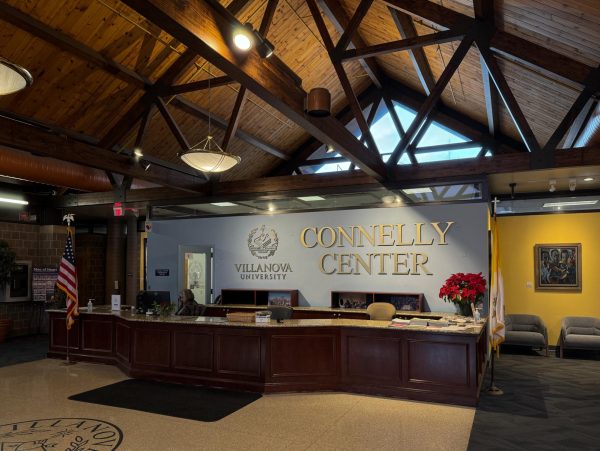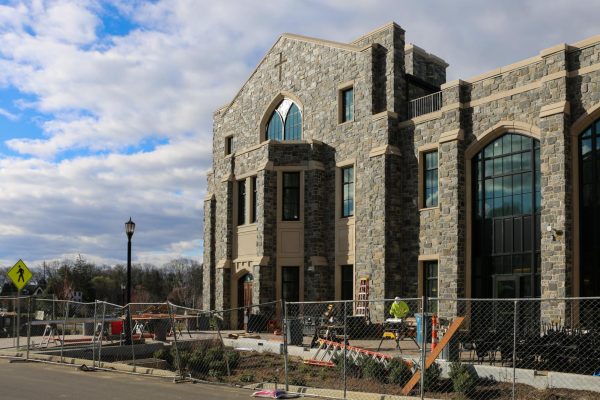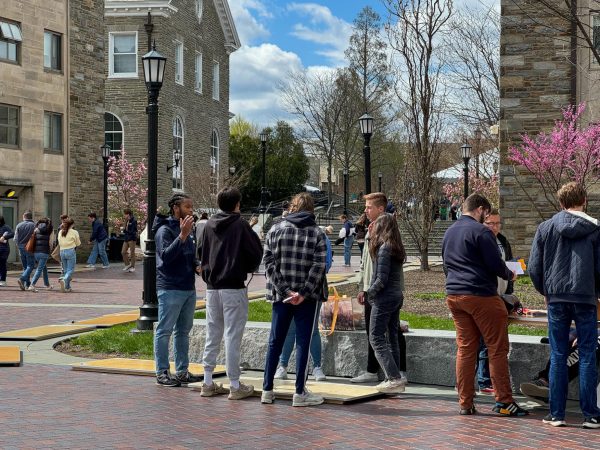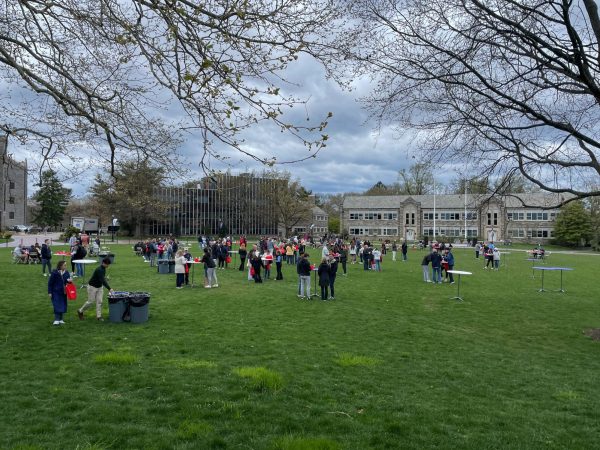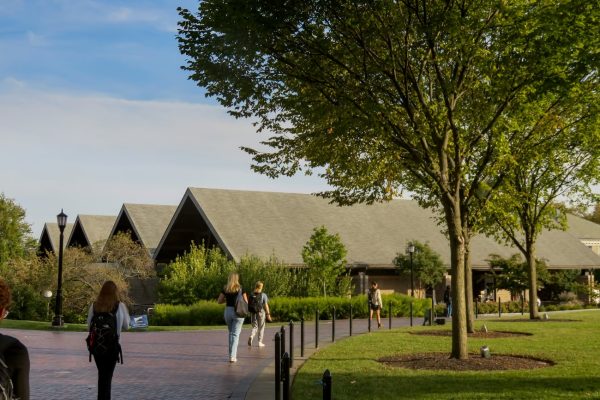Expansion of gender inclusive bathrooms on campus
November 9, 2016
Last March, North Carolina became the first state in America to ban people from using government restrooms that do not match the gender written on their birth certificates. Governor Pat McCrory signed the Public Facilities Privacy & Security Act out of concern for privacy and crime, claiming sex offenders could easily violate and take advantage of gender inclusive bathrooms.
Opponents of North Carolina’s “bathroom bill,” such as President Barack Obama, claim North Carolina’s law violates federal civil rights laws. The list of schools installing gender inclusive bathrooms has widened to some Catholic schools. Such restrooms can be found now at Creighton, Fairfield, Fordham, Georgetown, Marquette, Santa Clara, Boston College and the University of San Francisco, according to the National Catholic Register. Within the next couple of weeks, Villanova University will be included on this list of universities.
There is a number of single stalled bathrooms on campus with signs depicting male and female figures on the door. Many of the single-stalled bathrooms on campus were already available for any gender to use. Soon, these facilities will have a sign that simply says, “Restrooms.” All multi-stalled restrooms will remain gender specific.
Over the summer, Title IX Coordinator Ryan Rost, the General Counsel, the Office Student Life, Athletics, Residence Life and Environmental Health and Safety worked with Facilities Management to discuss how to make the University more inclusive to non-gender binary and transgender students. “Essentially, we have already had gender-inclusive bathrooms and are just changing signage in an effort to be consistent to the University mission that Villanova should be an environment that supports individual differences,” Rost said. “Because we are committed to providing bathroom facilities that are inclusive and honor the privacy needed in a bathroom, we would like our students, faculty and staff of all genders and gender identities, the option of using a bathroom where they and those around them can feel most comfortable.”
The decision to install gender inclusive restrooms can be confusing, especially in a Catholic environment. “The [duality of male and female] is an essential aspect of what being human is all about, as ordained by God,” Pope Benedict XVI cautioned in 2012. “Man and woman in their created state as complementary versions of what it means to be human are disputed. But if there is no longer duality of man and woman in creation, then neither is family any longer a reality established by creation.”
We have historically used “sex” and “gender” interchangeably, but today they have different meanings. According to Medical News Today, “sex” refers to “the biological differences between males and females, such as genitalia and genetic differences.” Individuals with two X-chromosomes are generally identified as female, while males generally have an X and Y chromosome, since the Y chromosome carries the chemical capacity to grow testes.
Some individuals’ chromosomes do not line up with the biological “binary.” Some men have two or three X chromosomes, and sometimes women have a Y chromosome. Gender, on the other hand, exists on a spectrum of masculinity and femininity. The point on the spectrum at which someone is considered male in Italy differs from the point on the spectrum at which someone is considered male in Japan. In some countries, it is socially acceptable for men to wear makeup. In some cultures, there are more than two genders functioning in society. Not only does gender vary by location, but it also varies by time. In the 1920s in America, magazines deemed pink the appropriate color for little boys. Men wore high heeled shoes before women. In this sense, gender is sort of arbitrary, based on time, location, culture and many more factors. There are a number of individuals that feel their biological features do not match the social expectations of their identity and behavior, while there are others that believe their identity is neither male nor female. Gender inclusive restrooms provide such individuals with the option to use the bathroom in a way that makes all genders equal.
Rost and members of Facilities Management have already ordered the signs and are currently working through communicating with faculty members in charge of various buildings on campus. A list and map of the locations of the gender-inclusive restrooms will soon be posted on the VU Pride’s website.
VU Pride is the University’s LGBT and Ally group seeking to foster an understanding of sexual orientation within a Catholic Judeo-Christian environment.
In a statement responding to the updated and inclusive signage, VU Pride said, “This is a positive step in the right direction by the University to become more inclusive of people with varying gender identities. That being said, issues such as housing, the majority of bathrooms on campus, locker rooms and healthcare access still must be addressed by the University. VU Pride looks forward to participating in this dialogue with the administration to fulfill the mission of inclusivity at Villanova.”



